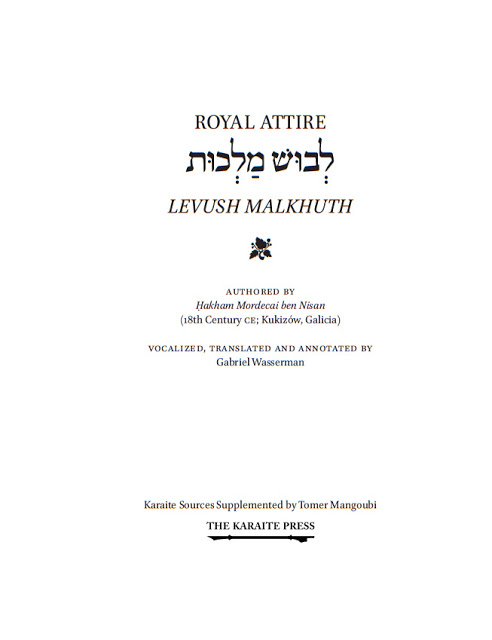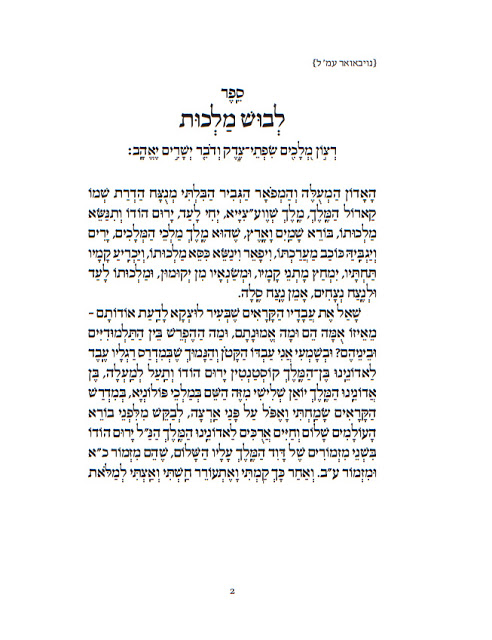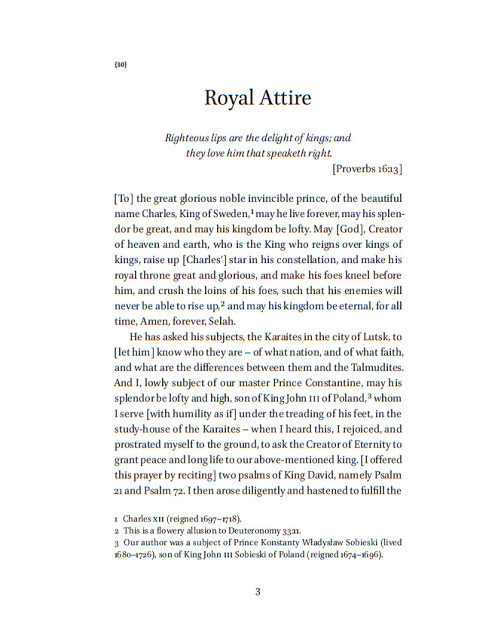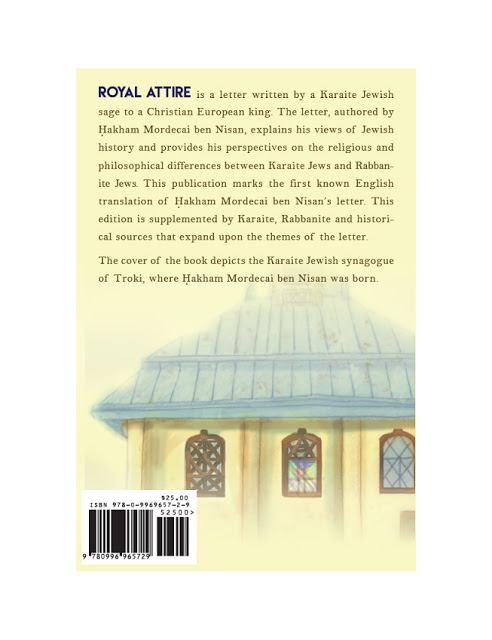New book by Gabriel Wasserman on Karaite Judaism
The Karaites are a Jewish group who have been important for centuries of Jewish history, wrote many writings, and are a still extant minority today. Yet most people never get to hear much about them, especially not in their own words. When people in a typical rabbinic beth midrash encounter them, it is often in statements such as that of the Mishna Berura (27:33), that wearing tefillin down on the forehead, rather than further up on the head, is a Karaite practice. In fact, this statement is completely untrue, for Karaites do not wear tefillin at all, but rather understand Deuteronomy 6:8 and the other tefillin verses metaphorically, as meaning to constantly remember the Torah.
This book offers a rare opportunity for English-language readers to hear a Karaite sage’s own explanation of the differences between Karaite and Rabbanite (Talmudic) Judaism. (For example, see pp. 96 ff. for a discussion of the metaphorical understanding of the tefillin verse.)
The Hebrew text is of a letter by the Karaite sage R’ Mordecai ben Nisan of 18th-century Troki, Lithuania, to King Charles of Sweden, explaining differences between Karaite and Rabbanite Judaism: a narrative of how the two groups came to be, a selection of over forty specific commandments about which the groups disagree, and theological/philosophical differences.
Dr. Gabriel Wasserman, a contributor to the Seforim Blog, did a lovely job of adding nikkud, translating, and annotating. His notes unpack the text for modern readers, and provide quotations of earlier texts, both Karaite and Rabbanite, to show a broader picture. This book will be excellent reading for anyone who wants to learn, or teach a class, about varieties of Judaism and “Judaisms”.
This book is the first work of this size to be published by the recently-started Karaite Press. They have done a beautiful job of lining up the Hebrew and English, and adding an introduction at the beginning and several indices at the end of the volume. Tomer Mangoubi has helped the author supplement the notes with additional material from other Karaite sources. In all, it is a fine and interesting volume, and we look forward to the future success of the Karaite Press in putting out further Karaite texts, to make them accessible to a broader public.
This book may be ordered here:
Here are several sample pages:




